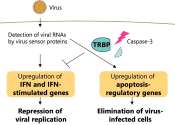New findings shed light on how bella moths use poison to attract mates
Pyrrolizidine alkaloids are as bitter and toxic as they are hard to pronounce. They're produced by several different types of plants and are among the leading causes of accidental death in cattle.









